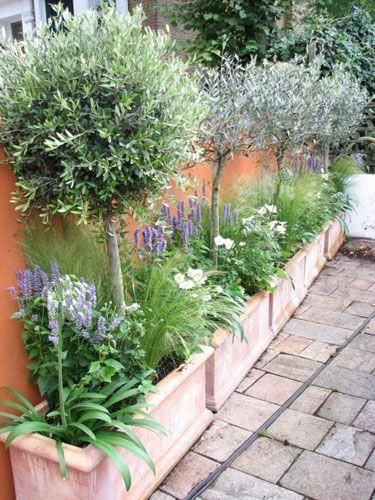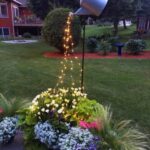Designing a pansy layout in the garden is a delightful way to bring color and vibrancy to outdoor spaces. Pansies are a popular choice for gardeners due to their striking blooms and versatility, making them an essential addition to any garden. Whether you’re a novice gardener or a seasoned expert, adding these beautiful flowers to your garden can enhance its overall appeal and create a stunning display.
Pansies are not only visually appealing, but they also offer a wide range of colors, sizes, and companion plants that can complement any garden design. From vibrant purples and yellows to soft pastel hues, there’s a pansy variety for every preference. In this article, we’ll explore the process of designing the perfect layout for your pansy garden, from selecting the right location to showcasing your beautiful creation.
When it comes to designing a pansy layout, there are various factors to consider such as sunlight, soil quality, drainage, and companion plants. By carefully choosing the perfect location for your pansy garden and selecting the right varieties that thrive in your specific conditions, you can create a striking display that will be the envy of all who visit your garden space.
So let’s dive into the essential steps for designing an eye-catching and vibrant pansy layout in your own backyard.
Choosing the Perfect Location for Your Pansy Garden
When it comes to designing a pansy layout in your garden, choosing the perfect location for your pansy garden is crucial for its success. The right amount of sunlight, suitable soil, and proper drainage are essential factors in creating a healthy and vibrant pansy garden. Here are some tips to help you select the perfect location for your beautiful pansies:
- Sunlight: Pansies thrive in cool weather and require at least 5-6 hours of sunlight per day. Choose a location in your garden that receives partial shade during the hot afternoon sun but still gets enough sunlight in the morning.
- Soil: Pansies prefer well-drained, fertile soil with a slightly acidic pH level. Before planting your pansies, prepare the soil by adding organic matter such as compost or peat moss to improve its texture and fertility.
- Drainage: Good drainage is essential for pansy plants to prevent waterlogged soil, which can lead to root rot. Ensure that the chosen location has proper drainage to avoid any water-related issues.
By considering these factors when choosing the location for your pansy garden, you can create an ideal environment for your pansies to thrive and bloom beautifully.
Remember that providing the right conditions will not only ensure the health of your plants but will also provide you with a stunning display of colorful flowers throughout the growing season.
Selecting the Right Pansy Varieties for Your Garden
When selecting the right pansy varieties for your garden, consider the following factors to ensure a beautiful and cohesive display of these vibrant flowers:
- Color: Pansies come in a wide range of colors, including purple, yellow, white, and blue. Consider the color scheme of your existing garden or outdoor space when choosing pansy varieties. Opt for complementary or contrasting colors to create a visually appealing composition.
- Size: Pansies can vary in size, with some varieties producing larger blooms than others. Take into account the scale of your garden and the other plants in the area when selecting pansy varieties based on size. Taller pansy varieties can provide a striking vertical element, while smaller varieties are perfect for border plantings.
- Companion Plants: When designing your pansy layout, think about companion plants that will complement and enhance the beauty of your pansies. Select flowers or foliage with contrasting textures and shapes to create an interesting and dynamic garden display.
By carefully considering these factors when choosing the right pansy varieties for your garden, you can create a visually striking and harmonious display of these delightful flowers.
Remember that pansies are not only known for their bright colors but also for their diverse patterns and combinations. Look for unique varieties that feature different color combinations within each bloom to add an extra element of interest to your garden design.
Furthermore, consider planting companion plants that have similar growing requirements as pansies to ensure that all plants in your garden thrive together. This will help create a cohesive and well-balanced landscape that highlights the beauty of your chosen pansy varieties.
Designing the Layout
When it comes to designing a layout for your pansy garden, there are several key factors to consider in order to create a striking display with these beautiful flowers. From color combinations to planting patterns, the layout of your pansy garden can truly make a statement in your outdoor space.
Color Combinations
One of the most important aspects of designing a pansy layout is choosing the right color combinations. Pansies come in a wide range of colors, from bold and vibrant to soft pastels. Consider creating visual interest by combining complementary colors or opting for a monochromatic scheme for a more subtle look. You can also incorporate different shades of the same color to add depth to your garden design.
Planting Patterns
The way you plant your pansies can greatly impact the overall visual appeal of your garden. Consider using traditional bedding arrangements for a classic look, or get creative with geometric patterns or even whimsical shapes like hearts or stars. No matter what planting pattern you choose, be sure to leave enough space between each plant to allow for optimal growth and airflow.
Container Gardens and Hanging Baskets
In addition to traditional flower beds, pansies are also well-suited for container gardens and hanging baskets. These options provide versatility in terms of placement, allowing you to showcase your pansies on patios, balconies, or even indoors. Mix and match different varieties and colors of pansies in your containers for an eye-catching display that adds visual appeal to any space.
By carefully considering color combinations, planting patterns, and alternative garden displays like container gardens and hanging baskets, you can create a striking display with pansies that will enhance the beauty of your outdoor space. Whether you prefer a structured and formal layout or a more whimsical and creative design, pansies offer endless possibilities for expressing your unique style through gardening.
Planting and Caring for Pansies
Pansies are popular garden flowers known for their vibrant colors and delicate appearance. They are a popular choice for gardeners due to their versatility and ability to bloom in various climates. When it comes to planting and caring for pansies, there are a few tips that can help ensure healthy and vibrant flowers.
First and foremost, it’s essential to choose the right location for your pansy garden. Pansies thrive in well-draining soil and prefer full sunlight, although they can tolerate some shade. It’s important to avoid overwatering pansies, as this can lead to root rot. Proper soil preparation is crucial for the success of your pansy garden.
When selecting pansy varieties, consider factors such as color, size, and companion plants. Pansies come in a wide range of colors, from bright yellows and oranges to deep purples and blues. Mixing and matching different colors can create a stunning visual impact in your garden. Additionally, consider planting companion plants that complement the colors of your pansies for a cohesive and attractive layout.
Finally, proper care is essential for maintaining healthy and vibrant pansy flowers. Regular deadheading – the removal of spent blooms – can encourage continuous blooming throughout the season. Watering pansies at the base of the plant can help prevent diseases caused by moisture on the foliage. Additionally, applying a balanced fertilizer every 2-4 weeks can promote strong growth and prolific flowering.
| Planting Tips | Caring Tips |
|---|---|
| Choose well-draining soil | Regular deadheading |
| Select location with full sunlight | Water at the base of the plant |
| Consider companion plants | Apply balanced fertilizer every 2-4 weeks |
Maintaining Your Pansy Garden
Watering Your Pansies
Pansies are known for their love of cooler temperatures and moist soil. It’s important to water your pansies regularly, especially during dry spells or hot weather. Typically, a thorough watering once or twice a week should be sufficient, but always check the soil moisture level by sticking your finger into the soil. If the top inch feels dry, it’s time to water. Avoid overwatering, as this can lead to root rot, which is detrimental to pansies.
Fertilizing Your Pansies
To keep your pansies healthy and blooming, it’s essential to fertilize them regularly. Use a balanced fertilizer with equal parts nitrogen, phosphorus, and potassium. You can choose a granular or liquid fertilizer and apply it according to the manufacturer’s instructions. Fertilize your pansies every 2-4 weeks during the growing season. Be sure not to over-fertilize, as this can result in excessive foliage growth at the expense of flower production.
Pruning Your Pansies
Regular deadheading – removing faded or dead flowers – is important for prolonging the blooming period of your pansies. This encourages the plant to produce new blooms rather than putting energy into seed production. Additionally, you may need to do some light pruning to remove leggy or straggly growth and maintain a compact shape for your pansy plants. Use clean and sharp pruners to make clean cuts and avoid damaging the stems or nearby buds.
By following these guidelines for watering, fertilizing, and pruning your pansy garden, you’ll ensure that your pansies remain healthy and vibrant throughout their growing season. Taking proper care of your pansies will reward you with continuous blooms and a stunning display in your garden landscape.
Dealing With Common Pansy Pest and Disease Issues
Pansies are generally hardy plants that are resistant to many pests and diseases, but they can still fall victim to a few common issues. One of the most common pests that affect pansies is aphids, which are small insects that feed on the sap of the plant and can cause damage to the leaves and flowers.
Another common issue is powdery mildew, a fungal disease that results in a white powdery coating on the leaves and stems of the plant. Additionally, slugs and snails are also known to cause damage to pansies by chewing on their tender foliage.
Preventing these issues involves maintaining good garden hygiene, such as keeping the area around your pansy garden free from weeds and debris, as well as regularly cleaning up any fallen leaves or petals. Providing proper airflow between plants by ensuring they are not overcrowded can also help prevent fungal diseases like mildew.
In terms of treatment, there are many organic options available for pest and disease control, including insecticidal soaps for aphids and neem oil for powdery mildew. For larger infestations or severe cases of disease, chemical controls may be necessary.
In addition to pests and diseases, pansies can also suffer from environmental stresses such as extreme temperatures or drought conditions. Proper watering practices, mulching, and providing adequate shade during hot weather can all help mitigate these issues and keep pansies healthy and thriving in your garden.
| Pansy Issue | Prevention & Treatment |
|---|---|
| Aphid Infestation | Maintain garden hygiene; use insecticidal soaps or neem oil |
| Powdery Mildew | Maintain good airflow; use neem oil; consider chemical controls if necessary |
| Slugs & Snails | Use barriers or traps; encourage natural predators like birds or frogs |
Showcasing Your Pansy Garden
In conclusion, designing a pansy layout in your garden can be a rewarding and fulfilling endeavor. From choosing the perfect location to selecting the right varieties and designing the layout, there are many creative ways to showcase your beautiful pansy garden. By following the tips for planting, caring, and maintaining your pansies, you can ensure that your garden is vibrant and healthy throughout the blooming season.
Once you have established and maintained your pansy garden, it’s time to showcase it in creative ways in your garden space. Consider incorporating hanging baskets, raised beds, or decorative pots to add dimension and visual interest to your display. Grouping different colors and sizes of pansies together can create a striking visual impact that will surely impress anyone who visits your garden.
Furthermore, don’t be afraid to experiment with various companion plants and accessories such as decorative planters or garden ornaments to enhance the overall look of your pansy layout. With proper care and thoughtful design, your pansy garden has the potential to become a focal point in your outdoor space, bringing joy and beauty for you and others to admire. So get ready to showcase your impressive pansy garden with these creative display ideas.
Frequently Asked Questions
How Do You Arrange Pansies in a Flower Bed?
Pansies can be arranged in a flower bed by planting them in clusters or drifts rather than in straight rows. This creates a more natural and visually appealing look for the bed. You can also mix different colored pansies together for a more vibrant display.
How Close Together Can You Plant Pansies?
When planting pansies, they should be spaced around 7-12 inches apart to allow enough room for them to grow and spread out. This spacing will also help prevent overcrowding as the plants mature, allowing each pansy to receive adequate sunlight and air circulation.
How Do You Display Pansies?
Pansies can be displayed in various ways, such as planting them in flower beds, hanging baskets, or containers like pots and window boxes. They also make lovely additions to front yard landscaping or as borders along walkways. Additionally, pansies can be used indoors as cut flowers in vases and arrangements to bring some color and cheer into the home.

Welcome to my gardening blog! I am passionate about plants and enjoy sharing my knowledge and experiences with others. In this blog, I will write about everything related to gardening, from tips on how to get started to updates on my own garden projects.





